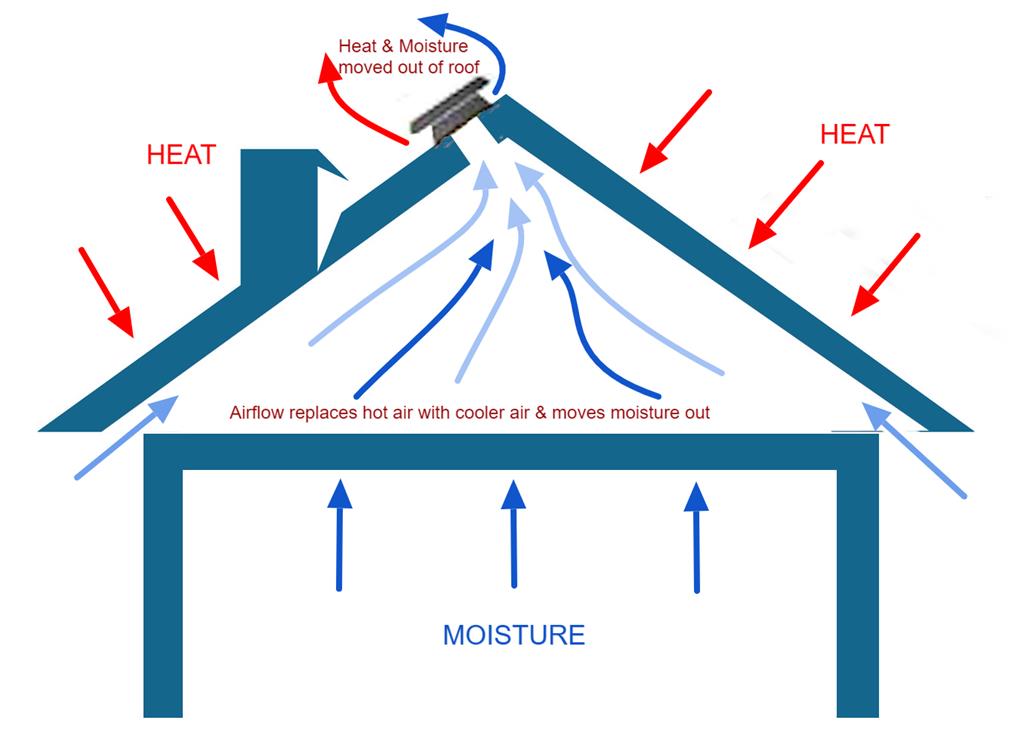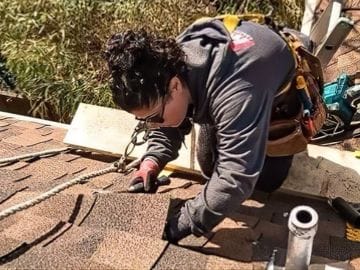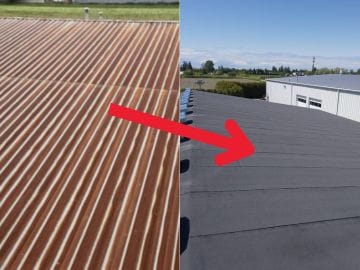Summer heat waves make the topic of roof ventilation extremely important because a lack of proper roof ventilation will cause problems for your roof and house
Understand the need for ventilation
Notice we didn't use the word "might" or "could." We used "will."
The only question is how long such destruction will take for a particular roof.
It is important to understand exactly what adequate attic ventilation is and how it affects the longevity of your roof and house.
What happens when airflow is restricted
Roof ventilation is comprised of a series of intake and exhaust vents placed strategically on your roof that allows adequate air to flow up through your attic both in summer and winter.
An adequate airflow will prevent the buildup of heat and moisture in the summer which can cause your roof shingles to buckle and deteriorate, and warp the roof deck.
In the winter, when warm, moist air rises from your home into your roof, it prevents the buildup of moisture which will mildew and eventually mould the insulation, cause beams to rot and also warp your roof deck.
Moisture and heat are the banes of your roof.
Will reduce or void warranty
Another important fact is that an improperly vented roof will cause the shingles to wear out prematurely. They will start curling and bending and/or losing granules way before their time.
CertainTeed is one of the top shingle manufacturers and Absolute Roof Solutions uses its products. Their Asphalt Shingle Products limited warranty states: "Any shingles applied to inadequately ventilated or non-ventilated decks ... are subject to a reduced limited warranty period of ten (10) years..." Depending on the product installed, their usual warranty period is from at least 20 years to a lifetime.
So it is double trouble with improper roof ventilation. Not only does your roof wear out faster but you void your shingle warranty. Ouch!
Causes of improper ventilation
Improper ventilation happens for four reasons:
1. the roof has an insufficient number of vents for the size of the roof,
2. the vents are too small,
3. the vents are in the wrong places, or,
4. the vents are plugged.
A roof might have any combination of these factors.
Proper placement of vents
Intake roof vents are usually in the soffit with exhaust vents being close to or on the ridge of your roof. This allows air to flow up through your roof.
Inexperienced roofers sometimes place vents in the wrong places or don't place enough vents for the size of the roof. Also over time, insulation can creep over the intake vents blocking the airflow.
It is even possible to create a massive problem for a roof by installing a new ridge vent on a home with gable vents. Because the ridge vent is higher, the gable vents will now flow air in, rather than out. This change in airflow direction will cause the gable vents to suck water into the roof when it rains, creating leaks and damaging insulation. Knowledgeable roofers know is essential to plug these vents if a ridge vent is installed.
This is why a roofer needs to have access to your attic. He needs to check these things. It is even in the building code that for every 300 square feet of a house, there needs to be one square foot of ventilation. This must be split 50% on the perimeter and 50% on the ridge.
If these things occur, the life of your roof will be dramatically shortened. So it is not a matter of just putting in a few vents willy-nilly. There is precision that is needed here.
When a homeowner needs to act
Iit is important that if you notice a buildup of moisture in your home, see that your air conditioning bills are getting high, or observe a rapid deterioration of your roof, it is time to call in the experts.

How Air is Supposed to Move Through Your Roof










